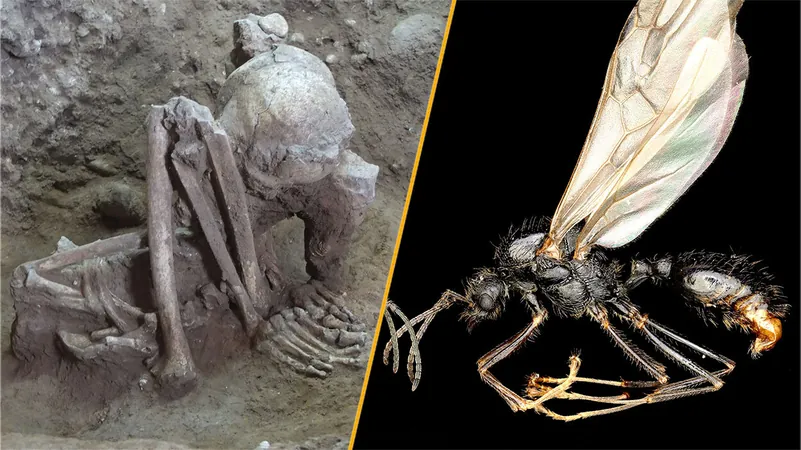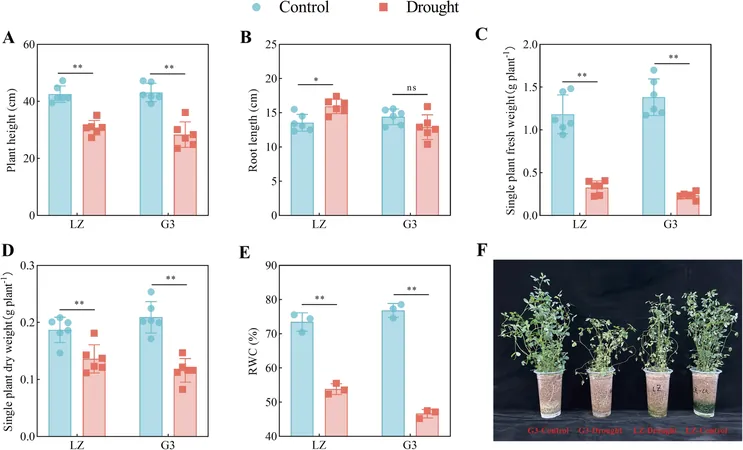
Mind-Blowing Science Discoveries: Ancient Mummies, Cloning Ants, and More!
2025-09-20
Author: William
Unveiling Nature's Wonders
This week’s science discoveries are nothing short of extraordinary, featuring fascinating new findings in the animal kingdom. Leading the charge are Iberian harvester ants (Messor ibericus), which have been caught in an act of evolutionary ingenuity—mating with males from a relatively distant species, Messor structor. In a groundbreaking twist, these ants don’t require nearby M. structor colonies; they can clone the males themselves. This incredible reproductive method, dubbed "xenoparity," redefines how we perceive species boundaries.
From Ants to Ancient Giants
In even more thrilling updates from the animal world, a jaguar has shattered records with the longest swim ever documented for its species. Meanwhile, scientists have unearthed new insights into how pachycephalosaurs developed their unique head structures designed for head-butting. And if that isn’t cute enough for you, a rare bearded snailfish has been spotted swimming off the California coast, adding a new layer of marine wonder.
The Grumpy Celebrity of the Animal Kingdom
Adding to the excitement, the famously grumpy Pallas's cat has been spotted in a new region—thanks to a well-timed camera trap in the eastern Himalayas. This fluffy feline continues to charm wildlife enthusiasts and researchers alike.
A Surge in Solar Activity
Switching gears to cosmic news: NASA has issued a striking warning—our Sun is waking up! Forecasts indicate an increase in solar activity over the next few decades, leading to a higher likelihood of extreme space weather. This unexpected behavior could have serious implications for our technology-dependent world, especially with our satellites and ambitious plans for space colonization.
Unearthing the Oldest Mummies
In archaeological revelations, researchers have discovered mummy remains dating back 10,000 years in Southeast Asia and China—long before the iconic Egyptian mummies. These remains, smoke-dried before burial, represent an ancient ritual rich in cultural significance. Scientists suggest they reinforce a "two-layer model" of migration across Southeast Asia, highlighting distinct burial practices among ancient hunter-gatherers and Neolithic farmers.
Curiosity Sparks Further Exploration
Curious about the broader implications of our modern technology? AI chatbots are tech’s latest energy drain, prompting experts to examine their relentless energy consumption as their popularity soars. Meanwhile, innovative science continues to push boundaries, from diagnostic anomalies to full-spectrum 6G chips capable of transferring data at lightning speed.
Mapping the Universe with Cosmic Signals
In our Science Spotlight this week, we delve into the mystery of fast radio bursts (FRBs)—brief, powerful bursts of energy that may help scientists unveil a map of our universe. These cosmic signals, which discharge more energy in moments than the Sun does in a year, continue to baffle researchers, promising to reshape our understanding of the cosmos.
A Weekend for the Curious
For those eager for deeper dives into science this weekend, consider exploring interviews and stories that connect us with the past and future of humanity and our environment.
Stunning Starlit Views from the James Webb
And don’t miss our spectacular space photo of the week from the James Webb Space Telescope: an awe-inspiring image of Pismis 24, a stellar nursery creating a cosmic masterpiece in the Lobster Nebula. With towering gas and dust spires and two of the brightest stars in the Milky Way, this image leaves us breathless and inspired.









 Brasil (PT)
Brasil (PT)
 Canada (EN)
Canada (EN)
 Chile (ES)
Chile (ES)
 Česko (CS)
Česko (CS)
 대한민국 (KO)
대한민국 (KO)
 España (ES)
España (ES)
 France (FR)
France (FR)
 Hong Kong (EN)
Hong Kong (EN)
 Italia (IT)
Italia (IT)
 日本 (JA)
日本 (JA)
 Magyarország (HU)
Magyarország (HU)
 Norge (NO)
Norge (NO)
 Polska (PL)
Polska (PL)
 Schweiz (DE)
Schweiz (DE)
 Singapore (EN)
Singapore (EN)
 Sverige (SV)
Sverige (SV)
 Suomi (FI)
Suomi (FI)
 Türkiye (TR)
Türkiye (TR)
 الإمارات العربية المتحدة (AR)
الإمارات العربية المتحدة (AR)